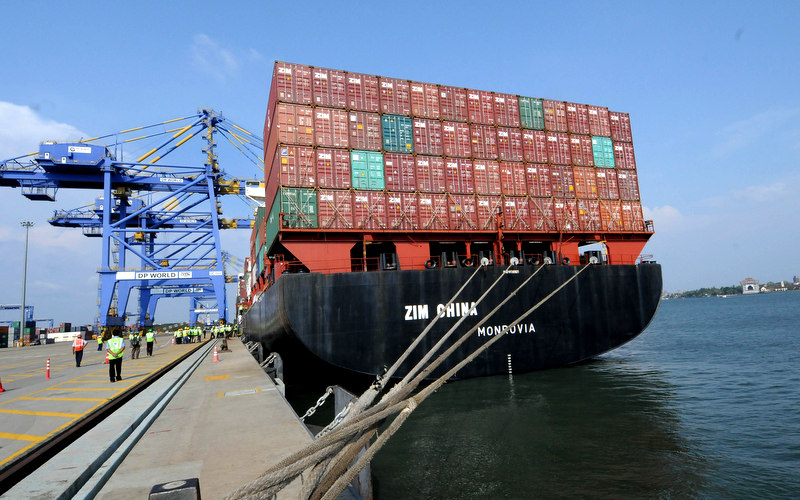28/01/2016
It was hailed as a game changer in India’s logistics infrastructure, supposed to give a run for Colombo Port’s money and boost Kochi’s fortunes as a port city. But five years after it started operations, India’s first transhipment terminal at Vallarpadam is still languishing.
The facility, operated by Dubai’s DP World, has been mired in poor planning and red tape that have made Indian ports the worst in the region. It’s been working at about a third of its capacity – in the year ended in March, Vallarpadam handled 365,000 Twenty Foot Equivalent (TEU) of boxes, compared with its capacity to load one million TEUs. Transhipment containers (those shipped directly without routing through neighboring ports) were only 17,000 TEUs.
"It’s got no future," said J.S. Gill, managing director at the India unit of Singapore-based Sea Consortium Pte., which runs the world’s largest independent common carrier of containers under the brand name X-Press Feeders. "It has not even caused a scratch on the back of Colombo."
About 2 million TEUs (the standard size of a cargo container) of containers -- either shipped from or heading for India -- are transshipped at Colombo every year. Colombo International Container Terminal, one of the three at Colombo, alone handled more than 1.5 million TEUs in in 2015, doubling its volumes from a year earlier.
A transhipment terminal such as Vallarpadam acts like a hub, where smaller feeder vessels bring cargo, which then gets loaded on to larger ships for transportation to final destinations. Larger ships bring about economies of scale and lower the cost of operations for shipping lines, which in turn translate into lower freight rates for exporters and importers.
Due to depth restrictions, bigger container ships cannot call at many of India’s ports. So more than half of the nation’s container traffic is transhipped at ports such as Colombo, Singapore, Salalah and Jebel Ali. This is because India had no port near international sea routes that can handle large mainline vessels. Cochin Port enjoys nearly the same locational advantage as Colombo Port with a 76 nautical miles deviation from the main East-West shipping route.
Vallarpadam, built at an investment of about 32 billion rupees pooled in by the government and DP World, was supposed to attract those large ships.
But it failed.
A serious issue that damps the prospects of Vallarpadam is that Kochi is prone to siltation and requires dredging to make the channel navigable for ships throughout the year, entailing huge costs. Dredging costs are typically priced into the vessel-related charges that ships pay to call at a port. The port calling costs at Colombo is one-tenth of Vallarpadam, and this makes competing with Colombo an uphill task. Colombo can afford to offer such low rates because it is already an established player that has the benefit of volumes.
Vallarpadam has also been further hit by India’s notorious red tape. Only after 20 months from the facility’s February 2011 start, did authorities ease rules to let foreign flagged ships ply between Vallarpadam and other Indian ports. This relaxation of the so-called Cabotage rule ended in September 2015 after a three year run, and is yet to be renewed.
"Vallarpadam has not been able to achieve what it set out to achieve," Kevin D’Souza, director, commercial and business development, India Sub-Continent of DP World, said earlier this month in Mumbai. He blamed delays in getting Cabotage relaxation and procedural issues between the Customs and SEZ authorities for the underperformance of the facility.
The terminal operates from a Special Economic Zone (SEZ) that grants fiscal concessions and procedural ease at par with competing global terminals. But a jurisdictional dispute between the Customs and the SEZ authorities over the clearance of transhipment containers cost precious time for the terminal during its initial days. Colombo consolidated its position while Vallarpadam was struggling for approvals and procedures.
"If you really want to enter the transhipment business, you have to slash the price by half to compete with Colombo," said Gautam Adani, the billionaire founder of Adani Ports and Special Economic Zone, which is building a port at nearby Vizhinjam. "That’s why DP World has not been successful at Vallarpadam."
(Photographs by Johney Thomas & Gulfu via Foter.com / CC BY-NC-SA)


